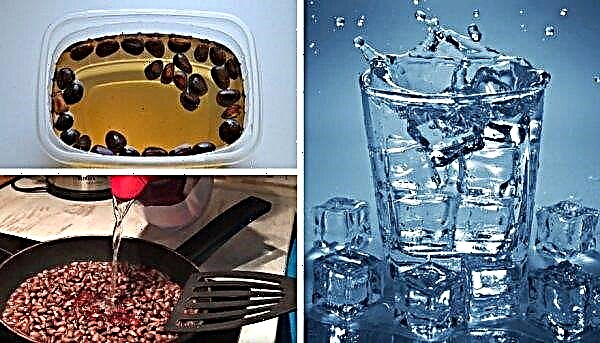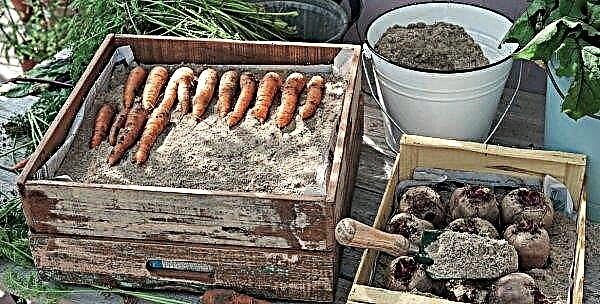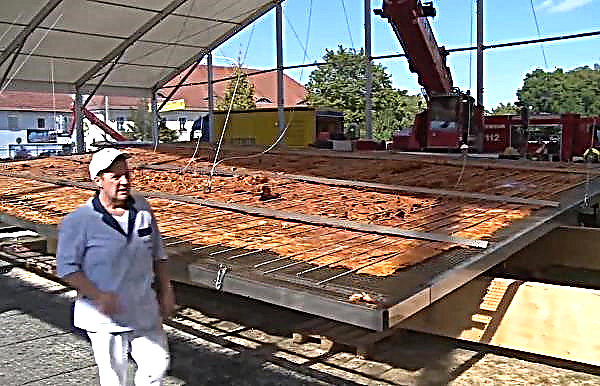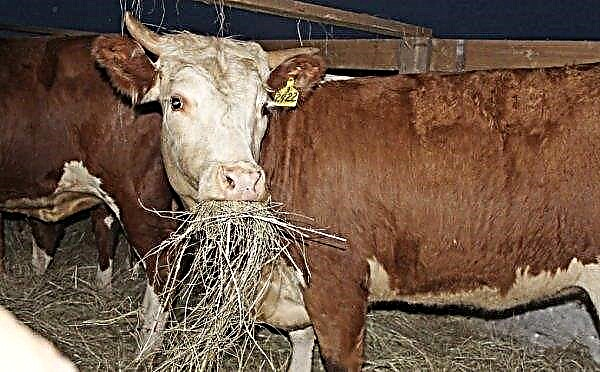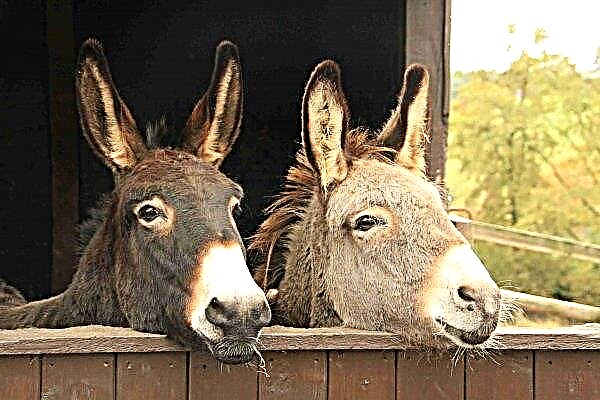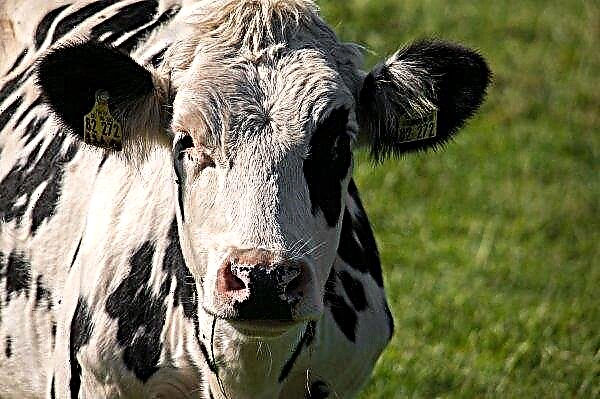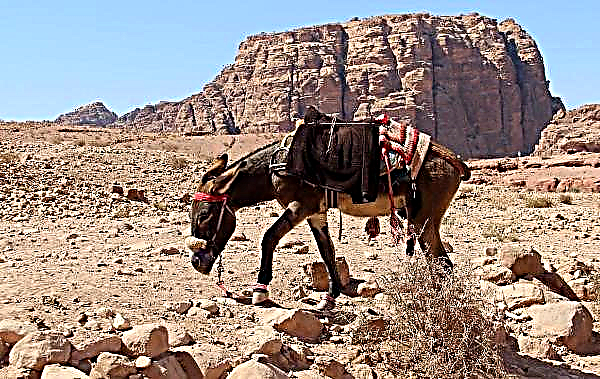If you keep bees, you are probably interested in ways to keep them in winter. This article is dedicated to the construction of an Omshanik (winter hut) for them. We will talk about the basic structures, as well as the microclimate necessary for the winter keeping of bees.
What is Omshanik? Description and Features
Omshanik is a quiet and safe room with a microclimate suitable for wintering bees. In plan it is a square or rectangular structure, the dimensions of which correspond to the number of hives.
Mandatory requirements for the device include insulation and optimization of the temperature of the air inside.
Omshanik features:
- small size sufficient for dense placement of hives;
- the ability to keep the temperature at the level of +3 ... + 10 ° С;
- mandatory availability of controlled ventilation.
For regions with frosty winters, such a room is necessary. In the southern regions, Omshaniks do not build, but simply insulate the hives.
Benefits of Omshanik for bees
- Among the advantages of Omsk people it is worth noting:
- good conservation of bee colonies;
- health benefits of bees;
- the opportunity for the queen to take a break from laying eggs in comfortable conditions;
- lack of sharp fluctuations in temperature indoors;
- increase the useful life of hives;
- feed saving, as insects wintering in comfortable conditions consume less feed.
Bees in the winter house do not fly, do not get food and do not grow broods (actions that require a lot of energy), so they can save energy and accumulate body fat.
Did you know? On average, a bee in its entire life produces only 1/12 teaspoon of honey.
Types of structures
By location relative to the surface, the structures are divided into underground, aboveground and combined type (semi-underground). The beekeeper’s choice depends on his potential.
Overground construction is cheaper, in addition, if you stop holding bees, then the room can be used as a barn. Natural light is made in it and it is necessarily insulated. When deciding what to insulate, pay attention to new materials. They not only keep heat better, but are resistant to rodents, pests and microorganisms. Read information about the features of the material on its label.
Experienced beekeepers prefer underground structures. This allows you to keep the temperature stable throughout the winter. And even in cold weather, the room does not need to be additionally heated. But overground structures in the northern regions will need heating. The disadvantage of the underground structure is the high cost of construction and the need for installation of lighting.
The combined structure is deepened by only 1-1.5 m. Such buildings are used if groundwater does not allow to completely deepen the structure into the ground. Semi-underground wintry also requires insulation. The level of deepening depends on the depth of the aquifer, therefore, when performing the construction scheme (drawing), consider this and other climatic factors.
Omshanik requirements
Prior to the start of construction, determine the place for construction and the size of the structure. If there is a site with groundwater, choose a combined omshanyk with a partial deepening into the ground. The dimensions of the building should be sufficient so that it is convenient to care for the hives, install and remove them.
Mandatory requirements:Did you know? Buzzing bees — this is the sound of their wings, which perform 11,400 strokes per minute.
- compact size (for the project consider the size of the hives and walkways);
- the presence of passages between the hives;
- the availability of lighting for underground structures;
- if possible, provide lifts for convenient installation of hives;
- Provide a gable or shed roof that does not accumulate snow;
- equip 1 entrance for 300 hives; if there are more, then 2 entrances from opposite sides;
- insulate the walls with foam or other insulation;
- create conditions under which the temperature will be kept at + 5 ° C;
- equip a ventilation system to remove stale or humid air from the room on time.
Temperature
If the air temperature rises above + 13 ° C, then the honey bees begin to work. This will adversely affect their condition in the winter. It should be noted that flight activity does not occur outside the air temperature range + 10 ° С and + 43 ° С. In this regard, it is necessary to maintain the temperature in the winter hut in the range from 0 to + 7 ° С.

Humidity
The optimum air humidity in heated rooms is in the range of 50-60%. The unheated is slightly reduced. It is necessary to control humidity in severe frosts. You may need a fan so that condensation does not accumulate in the room. If, as a result of a drop in temperature and the presence of high humidity, ice jams form on the path of air flow in the hives, they must be carefully removed, raising the temperature in the room so that they thaw gradually. Dry the room with ventilation.
How to make an omshanyk for bees with your own hands?
To build an Omshanik, select a site - it must be dry. This is a basic requirement for underground structures. And it is better that it was a hillside. If you are building an elevated room, orient it to the southeast so that a sufficient amount of light and heat enters the room.
Accurate dimensioning of the structure. An apiary with 100 hives is recommended to be placed in 2 rows of 3 floors. The width of one rack is 160 cm, the width of the aisle is up to 90 cm, the gaps between the walls or rows are 20 cm. The approximate size of the room is 7 × 6 × 2.5 m.Necessary materials and tools
Omshanik is built from expanded clay blocks, wood, adobe or brick. Building wood is selected without knots, cracks or damage by insects. Be sure to treat it with antifungal drugs.
Materials for construction:
- sand;
- concrete;
- brick, adobe or wood;
- insulation;
- boards;
- polyurethane foam;
- timber;
- fittings;
- metal.

Construction Tools:
- capacity for solution preparation;
- concrete mixer;
- trowel, buckets;
- drill;
- a grinder and disks for it for cutting bricks and additional materials;
- construction level and tape measure;
- shovel.
Did you know? In the cold autumn-winter months, worker bees live up to 9 months. In the summer, they rarely survive longer than 6 weeks and literally work “to death”.
Step-by-step instruction
To create a building, you need to clear the site and dig a pit. Mark the building with pegs and a building cord.

The construction of the pit and foundation includes the following actions:
- Dig a pit to the size of a winter hut. The size of the pit should be larger than the winter hut so that it is convenient to place the formwork and move in the pit.
- Be sure to level the walls and half the pit with the help of a building level.
- Reserve space for the stairs.
- Install the formwork in the pit. Compare it by level.
- To prepare the solution, 1 part of the cement is mixed with three portions of sand and water is added until a plastic mass is obtained.
- The bottom is tamped and poured with the resulting concrete.
- The foundation must be reinforced to prevent cracking.
- The surface of the foundation is leveled.
- To remove excess air, pierce it with fittings in several places.
- After 2 weeks, the formwork can be removed.
- Check the foundation for dryness over the next week or two.
- Now you can start laying walls.
Important! Dip each brick in water for several minutes before laying. This is necessary in order to increase the strength of the masonry. Overdried bricks can subsequently absorb moisture from the ground and deform.
Step-by-step instructions for laying walls and roofs:
- Apply a layer of mortar.
- Lay the first row of bricks.
- Check that the amount of solution is approximately the same in thickness across the entire row.
- Check the masonry level.
- To strengthen the structure, it is possible to lay a reinforcing mesh through several rows.
- Gaps between the masonry and the foundation pit from the outside are coated with a layer of clay.
- To install the roof, mount the metal upper trim.
- Weld the total square of the harness and additionally weld the channel (ceiling rails).

- Lay the formwork boards on the ceiling (the design resembles slab forms).
- At the bottom, lay cellophane and a reinforcing mesh in 2 layers.
- Fill with concrete.
- After the concrete dries (after 3-4 weeks), lay the roofing material.
- The roof can also be covered with slate instead of roofing material.
- Lay out the steps.
- Install exhaust ventilation using pipes.
- Spend artificial lighting.
- Install the hive racks.
- Install the door to the room.
Important! Be sure to seal any cracks in the building with foam.
Ventilation
The reason the colony needs good ventilation is because the hives are not condensed during the colder months. Ventilation can be made in the form of a single pipe - exhaust. It works well in winter, but in spring can lead to an excessive increase in temperature inside and early departure of bees.
Two-pipe ventilation forms the supply and exhaust channels. The supply pipe is placed near the floor. Valves are installed on both pipes so that the air flow can be regulated.

Thermoregulation
At an outside temperature of about + 13 ° C, honey bees will gather closer to each other. If the outside temperature is below –5 ° C, then the bees inside the cluster begin to work with wings to generate heat. Therefore, inside the cluster of bees in the hive, the temperature should not fall below + 12 ° C, and outside - below + 7 ° C.
Warming
On the inner side of the wall can be insulated with mineral wool, polystyrene foam or other rolled insulation. The insulation is fixed with wooden slats. The walls are also insulated with plate materials, which can later be painted to give the building a more aesthetic appearance.
Did you know? When aging bees do the work intended for young insects, their brain ceases to age. In fact, their brain is aging the other way around. Scientists believe that this discovery will help slow down the occurrence of dementia.
Wintering of bees in Omshanik
Strong healthy colonies with a low level of parasite damage should overwinter. The first step to wintering is to evaluate the colony in September for its wintering ability. She must have a young prolific queen, ample supplies of honey, a large population of bees.
Omshanik preparation
The second step is to prepare the premises for wintering. For this, the winter hut is well dried even in the summer in sunny weather.
Check how the ventilation and lighting work, and repair them if necessary. Inspect the Omshan for rodent damage. If rodent-resistant materials were used when covering the walls with insulation, additional measures are not necessary. Otherwise, it is advisable to cover all surfaces with a metal mesh to prevent rodents inside. The ceiling and walls are disinfected with slaked lime.
Sand is poured on the floor to reduce noise when moving around Omshanik in winter. You should also check the door hinges to eliminate disturbing bee sounds. Check the quality of the shelving and repair if necessary.
Disinfection of the premises is carried out with sulfur blocks. The peculiarity of processing rooms with smoke is that it is able to penetrate even the most inaccessible cracks, destroying microorganisms, and can even affect rodents. The consumption of the substance is 80 g / m³ area. When using checkers, you need to light the wick and exit the greenhouse.
Important! Refrain from visiting the premises for 3 days, as sulfur is toxic to humans and animals.
Dates and features of hive entry into the wintry
There is no specific date when you should start wintering. The main parameter for bringing hives into the room is the beginning of cold weather and the end of warm days. If the temperature drops below + 10 ° C, the bees do not fly, and the hives can be placed for wintering.
Before entering the hives, close the doors and place the hives in the Omshanik. You need to carry them carefully so as not to disturb the bees. Open hatching is allowed only 3-4 hours after all the hives are installed and the bees calm down.

How to care for families?
The biggest wintry problem is moisture. With high humidity, honey can “pull moisture” and turn sour, which causes diarrhea and death of bees.
To reduce humidity:
- Mount the ventilation system when creating an omshanyk;
- air and prepare the room for wintering in the summer;
- hives enter only in dry and clear weather.
Check the hive ventilation system. Air should enter through the bottom and exit through the top. Do not forget to reduce the entrance to the hive so that the mice cannot use it as a wintering room.
In the upper part of the hive place food, closer to the wall. Below, bees form a club and grow brood. In the first month of wintering, they eat 700 g of honey. Further, its consumption will increase by about 2 times. Make sure that the honey frames are in the right place, that is, on both sides of the cluster and above it in the hive. Move them if necessary.
If the winter is warm, control the temperature in the hives to remove part of the insulation if necessary, lowering the temperature in the hive. Bees alarmed by heat behave uneasily and can become ill.Bees do not need light during wintering. When exercising control, the beekeeper should behave neatly and quietly, and also not smoke, not make sharp or loud sounds. During control, just lift the lid, make sure the bees have enough food, and then close it. If the temperature drops to –4 ° C, make sure that the bees are not cold.

Although winter is a difficult time for bees, you can help them by arranging the right conditions for wintering. If you do everything possible, in the spring you will get families in good condition, capable of high productivity.




